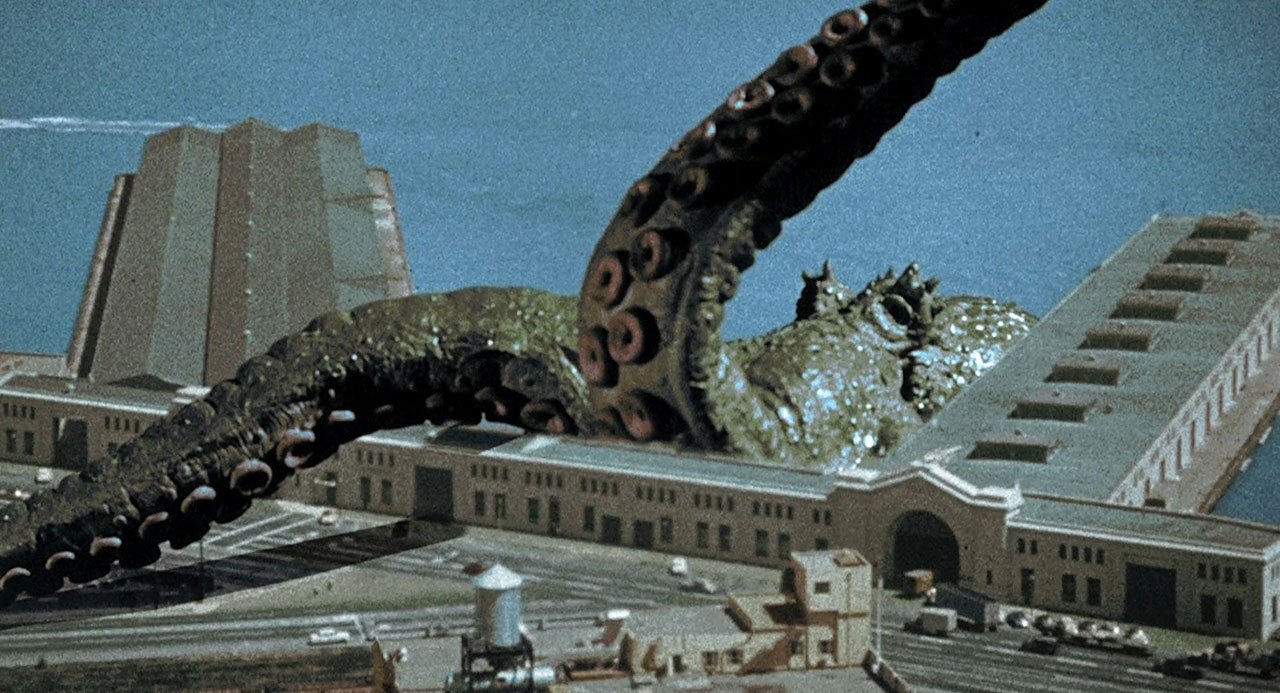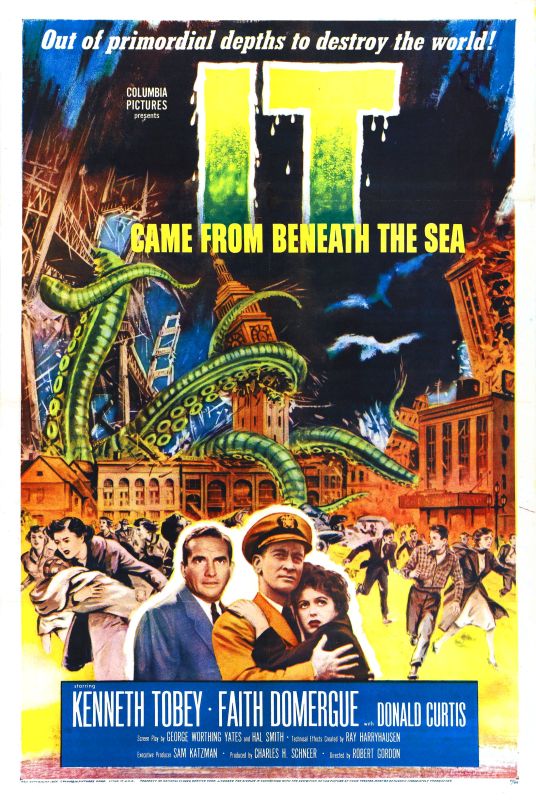Crew
Director – Robert Gordon, Screenplay – Hal Smith & George Worthing Yates, Story – George Worthing Yates, Producer – Charles H. Schneer, Photography (b&w) – Henry Freulich, Music Director – Mischa Bakaleinikoff, Technical Effects – Ray Harryhausen, Special Effects – Jack Erickson, Art Direction – Paul Palmantela. Production Company – Clover.
Cast
Kenneth Tobey (Commander Pete Matthews), Faith Domergue (Professor Lesley Joyce), Donald Curtis (Dr John Carter)
Plot
An atomic submarine under the command of Commander Pete Matthews encounters a large underwater object at sea, which traps them. They manage to escape by blowing their ballast and surfacing. A foreign organic substance is found on the diving planes. The Navy calls in top marine biologists to determine what this is. The matter is finally found to have come from a giant octopus that normally lives in the deep of the Mindanao Trench. The scientists discover radiation present, meaning that atomic testing has changed the octopus so that it will no longer eat its natural food and is forced to now eat larger items on the food chain. Devouring all in its path, the octopus now emerges and makes its way toward San Francisco.
It Came from Beneath the Sea was cult stop-motion animator Ray Harryhausen’s immediate successor to his first solo film The Beast from 20,000 Fathoms (1953). Although what has happened is that Harryhausen merely went back and remade The Beast from 20,000 Fathoms with minimal changes. Like The Beast from 20,000 Fathoms, the plot centres around a giant creature disturbed by atomic testing, which then emerges to attack a major American population centre (New York in The Beast from 20,000 Fathoms, San Francisco here), bringing down many of its famous landmarks before it is destroyed. It was a formula that served just about every 1950s monster movie.
It Came from Beneath the Sea does stand a little too much in The Beast from 20,000 Fathoms‘s shadow. Most of the film is told in a stolid, flat style that seems more like an Army training documentary than a dramatic film. The problem is that one has to plod through three-quarters of the film to get to the monster sequences. Attempts are made to pep these scenes up with a romantic subplot but this is so sluggishly handled that it seems hailed in from Mars.

Certainly, when the climactic scenes of wholesale destruction do arrive they are great. Ray Harryhausen’s skills as an animator have improved vastly since his cruder work on The Beast from 20,000 Fathoms and the images of the monster’s tentacles slowly emerging up out of the water and curling around the pillars of the Golden Gate Bridge are excellent. The scene where the army progress with flamethrowers and engage in a ballet, forcing the creature to back off, howling the whole way, are also superb. The only disappointment with the monster scenes is the underwater climax where the submarine is all too obviously an unconvincing model and the shots of the divers going out to confront the monster are merely shots of men in diving gear in a shallow pool.
Ray Harryhausen’s other films are:– The Beast from 20,000 Fathoms (1953); the alien invader film Earth Vs. The Flying Saucers (1956); the alien monster film 20 Million Miles to Earth (1957); The 7th Voyage of Sinbad (1958); The 3 Worlds of Gulliver (1960); the Jules Verne adaptation Mysterious Island (1961); the Greek myth adventure Jason and the Argonauts (1963); the H.G. Wells adaptation The First Men in the Moon (1964); the caveman vs dinosaurs epic One Million Years B.C. (1966); the dinosaur film The Valley of Gwangi (1969); the two Sinbad sequels The Golden Voyage of Sinbad (1973) and Sinbad and the Eye of the Tiger (1977); and the Greek myth adventure Clash of the Titans (1981). Ray Harryhausen: Special Effects Titan (2011) was a documentary about his work.


